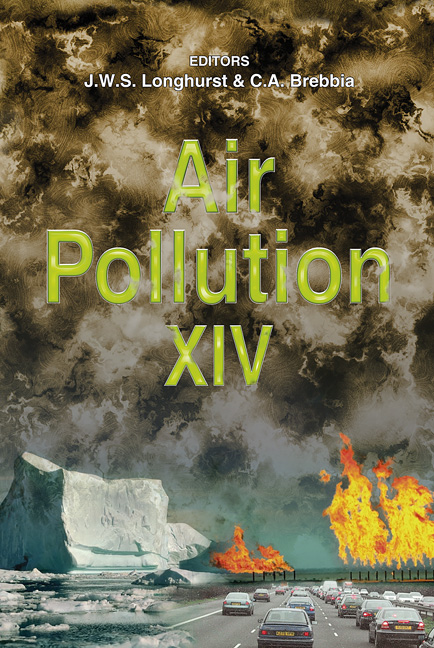Short-term Prediction Of Air Pollution Levels Using Neural Networks
Price
Free (open access)
Transaction
Volume
86
Pages
9
Published
2006
Size
451 kb
Paper DOI
10.2495/AIR060031
Copyright
WIT Press
Author(s)
G. Ibarra-Berastegi
Abstract
This paper focuses on the prediction of hourly levels up to 8 hours ahead for five pollutants (SO2, CO, NO2, NO and O3) in the area of Bilbao. Traffic, meteorological and air pollution network data corresponding to the years 2000 and 2001 have been used. 216 specific models based on different types of neural networks have been built using data for the year 2000. For each of the 216 cases, the choice of the best model has been made under the criteria of simultaneously having at a 95% confidence level the best values of R2, d, FA2 and RMSE when applied to the data for the year 2001. Depending on the pollutant, location and number of hours ahead the prediction is made, different architectures have been selected. In the case of SO2 and CO, in most cases persistence of levels or linear models outperformed those based on neural networks. Predictions of NO2 and O3 hourly levels required in most cases linear models while MLP, RBF or GRNN architectures were needed in few predictions. For the predictions of NO, linear models in some cases and MLP, RBF or GRNN based models in others, were the major options. In spite of the different architectures and also the different explanatory mechanisms involved the performance of the selected models is very similar. Keywords: air pollution forecasting, neural networks, MLP, RBF, GRNN. 1 Introduction Air quality networks are usually designed for diagnosis purposes, being the most important feature of a good network, that it has enough time and space resolution to follow the evolution of the most important fields of concentrations of pollutants. Very often, the same network also measures meteorological variables.
Keywords
air pollution forecasting, neural networks, MLP, RBF, GRNN.





